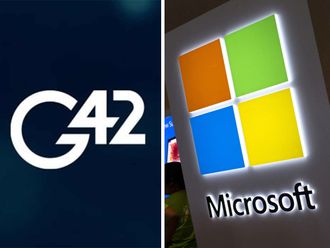London: European shares held steady at seven-year highs on Friday as investor confidence stayed buoyant ahead of the European Central Bank’s monthly 60-billion-euro money-printing programme set to start in March.
The FTSEurofirst 300 index of top European shares has surged 14 per cent this year, its strongest start to the year since regional stock market benchmarks were created in 1986.
“The market’s had a good run and it’s the end of the month so we’re going to see it drift lower today as people book some profit,” ETX Capital’s head of trading, Joe Rundle, said.
Investors have bought more higher-yielding assets, such as equities, as yields on core European government bonds have tumbled into or close to negative territory on the prospect of the ECB’s quantitative easing programme.
“The rally in stocks is so strong that we could see a capitulation of the shorts at some point, which would push the market even higher. Clearly some indexes have reached frothy valuation levels, but we’re still long in the short term,” said Mirabaud Securities senior equity sales trader John Plassard.
The FTSEurofirst index was little changed at 1,557.90 points after hitting a fresh seven-year peak of 1,558.01, with support from strong Airbus result, the world’s No. 2 aerospace company, and despite weaker Asian and US markets.
About two-thirds of the way into Europe’s earnings season, 55 per cent of companies have met or beaten profit forecasts.
Overall, fourth-quarter earnings are expected to grow by 19.5 per cent, according to Thomson Reuters I/B/E/S, which would be Europe’s best season in 3-1/2 years.
The ECB is expected to give details at its meeting next week on its Jan. 22 decision to embark on a securities buying programme to fend off deflation and revive Europe’s economy.
Data on Friday from some pockets of the Eurozone showed inflation prospects, although still subdued, may not be as bad as previously thought, prompting yields on top-rated government bonds to bounce off record lows.
US HEALTH CHECK The dollar index slipped, pegged back by month-end selling, but was still on track for its eighth straight month of gains on better data and comments from Federal Reserve officials that bolstered bets for a rate rise later this year.
The index, which measures dollar performance against major currencies, was set to mark its longest streak of monthly gains since the currency’s link to gold was dropped in 1971.
“It is the data, especially core inflation and durable goods, that is catching attention. We are still calling for a June rate hike and the market is not pricing that. (The markets) are looking for a hike much later. So yes, we think the dollar will outperform,” Barclays strategist, Hamish Pepper, said.
The dollar eased 0.1 per cent against the yen to 119.30 yen, but remained above Thursday’s low of 118.68 yen.
Economists polled by Reuters expected the figure to be revised down to 2.1 per cent from a preliminary 2.6 per cent.
The slip in the dollar helped the euro edge up 0.2 per cent to $1.1220, but still near the one-month low of $1.1184 plumbed overnight.
In oil markets, crude oil futures rebounded and Brent
was headed for its first monthly gain since July, helped by an improving demand outlook and supply outtages.












